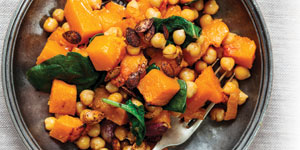Food
4 min Read
Ask a Dietitian: Are fibre-rich foods as important for kids as they are for adults?

August 31, 2016
Food
4 min Read

August 31, 2016

 In the past, when it came to youngsters, a fibre-rich diet only seemed to be indicated for those with irregularity issues. While these foods can certainly help avoid or manage constipation, research is showing there’s so much more to meeting fibre quotas than before. Including fibre may not only affect children’s health during childhood but it may help to prevent disease later in life.
In the past, when it came to youngsters, a fibre-rich diet only seemed to be indicated for those with irregularity issues. While these foods can certainly help avoid or manage constipation, research is showing there’s so much more to meeting fibre quotas than before. Including fibre may not only affect children’s health during childhood but it may help to prevent disease later in life.
A recent study, published in the journal Pediatrics, found that in a large group of women, those who had consumed the most fibre during their teen years and early adulthood were the least likely to develop breast cancer. Previous research had not found a connection between fibre and breast cancer in adulthood but scientists speculated that this nutrient played a role earlier in life. The authors found that each increase in total fiber of 10 grams per day was associated with a 13 percent decrease in breast cancer risk.
High fibre foods may also offer a defence against ailments such as high blood pressure and type 2 diabetes, formerly only a concern for adults. Fibre-filled foods also promote the growth of healthy bacteria in the gut as well as easier weight management.
Many foods contain a mix of two kinds of fibre – soluble and insoluble. But some are predominantly top-notch sources of one or the other.
Insoluble fibre, found in grain products such as wheat bran, promotes regularity but because the fibre needs to partner with water to be effective, boosting insoluble fibre intake without significantly upping the amount of water consumed can lead to abdominal woes including constipation.
Soluble fibre are gummy-like compounds which are found in legumes such as kidney beans and chick peas, ground flaxseed, whole grains such as oats, rye and barley and fruits and vegetables such as apples, oranges and okra.
Soluble fibre can help to regulate blood sugar readings because it slows down the digestion of carbohydrates. The result can be a decreased chance of having a “hangry” child – that’s a child who is hungry and as a result, irritable. Both kids and adults, but youngsters more so, release stress hormones into their bloodstream when blood sugar levels are low.
Suddenly adding more fibre to your diet can lead to abdominal distress such as cramps and bloating. Remember the old ditty, “beans, beans are good for the heart, the more you eat, the more you …” Boosting fibre amounts gradually, especially the gas producing soluble fibre-rich foods, can help the body adapt more easily.
Here are a few tips for increasing your kids’ fibre, but note that some of these foods may take some getting used to. Remember, kids who are involved in food preparation are more likely to eat the fruits of their labour.
Rosie Schwartz is a consulting dietitian in private practice in Toronto and author of The Enlightened Eater’s Whole Foods Guide (Viking Canada). Read more at rosieschwartz.com.
Originally published in ParentsCanada magazine, Aug/Sep 2016.